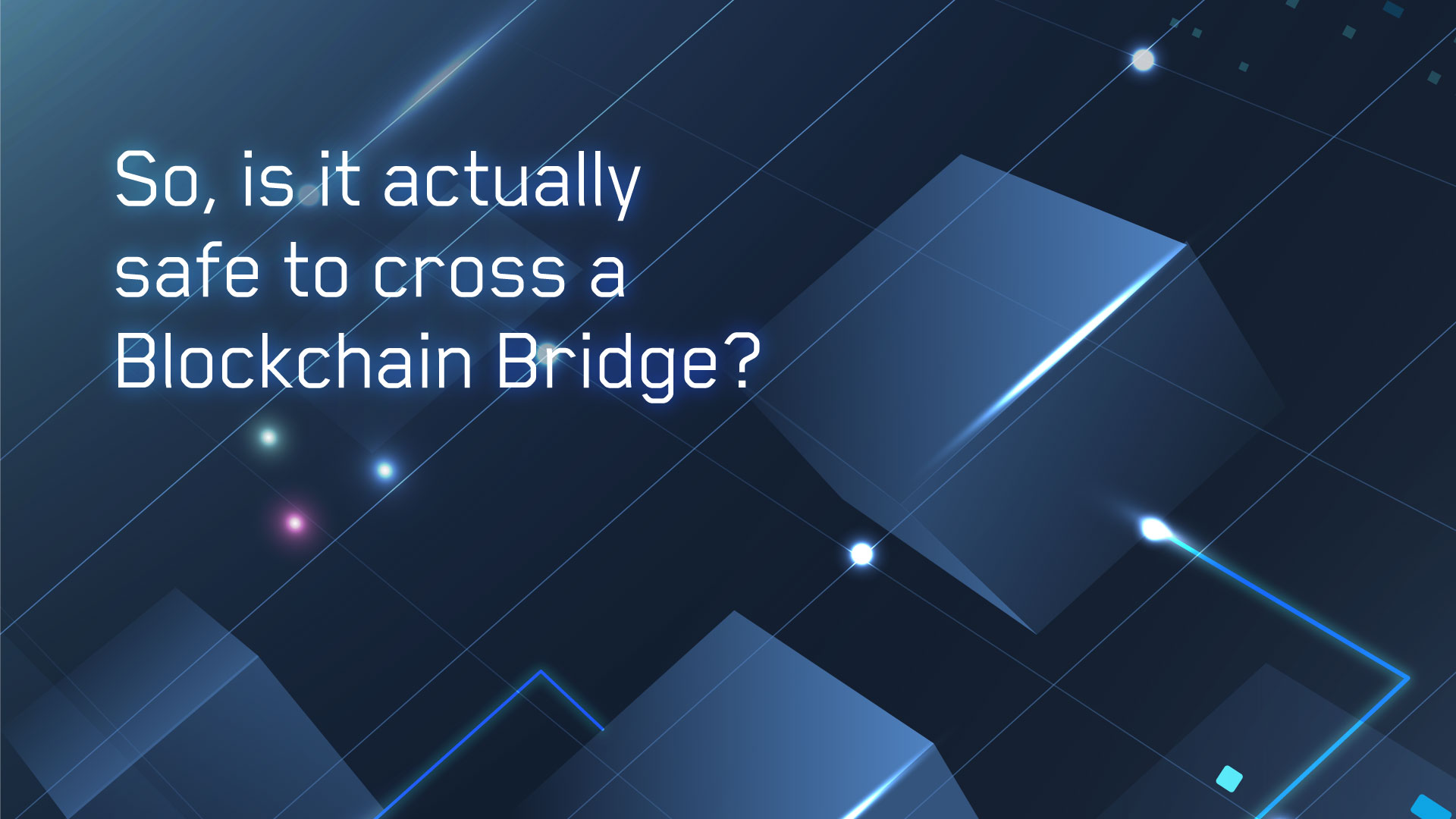Ethan and Liang worked together for an engineering firm. They were called upon frequently for bridge-building projects, specifically when safety and security concerns were involved in the strategic planning. One of the most famous projects they were honored to learn from as well as advise on was the Hong Kong–Zhuhai–Macau Bridge, now the world’s longest bridge-tunnel system spanning water.*
Today, they were about to Zoom into a meeting on a new project, also based in the Asian Pacific region. One unique element about this new project was the toll payment system would be blockchain-based. Using GPS tech, drivers would be able to pay the toll on their mobile phones with cryptocurrency from multiple chains, because the payment system would be utilizing a blockchain bridge integrated into a payment app popular in the region.
“Welcome, Liang and Ethan! We are so happy you are joining us on this exciting project,” exclaimed Cantara, the Project Manager, whose firm was based in Dubai. “Did you get a chance to look over the plans and deck we sent over?”
“Yes. Quite a fascinating endeavor. Very ambitious.” Liang’s response was an attempt to soften the blow Ethan was about to give with his safety assessment of the bridge plans.
“Maybe a little too ambitious,” Ethan added, “on two fronts – the actual bridge and the blockchain bridge. We have four suggestions on the actual bridge, and we did some research on blockchain bridges. It was underwhelming.”
“Ohhh.” Cantara was listening.
“Yes,” Liang continued. “We will get to the safety suggestions for the physical bridge, but have you done your homework on blockchain bridges? We are concerned by what we found and wondered your opinion on the matter. Multiple articles and a number of incidents caused us to question the use of one in the tolling product. So, is it actually safe to cross a blockchain bridge?”
“Well,” Cantara had done her homework. “First, for anyone on the call who may not already be clear on the matter, a blockchain bridge empowers movement between blockchains for both users and systems, enabling the transfer of cryptocurrency, the conversion of smart contracts, and the sending of data. Each blockchain, though intending to be decentralized, is a unique distributed ledger in and of itself. They aren’t inherently interoperable. So, in order to transfer crypto or files or contracts between blockchains, a bridge is needed. And unfortunately, Ethan and Liang are correct. There have been incidents crossing blockchain bridges when security and safety have been an issue.”
“Then, why are we integrating blockchain bridges into our toll app and our bridge project?” Tension rose as one caller spoke up.
“Because we have done our homework,” Cantara interjected kindly but firmly. “We found a blockchain bridge that over and over again has proven itself safe. Its developers have dedicated themselves to that single purpose, because interoperability of cryptocurrency and smart contracts will be essential for future user adoption. On top of that, the DAO that governs it has allocated significant capital for the maintenance of its ever-changing security needs. While no technology is immune from hacks and attacks, we believe we will be able to offer drivers a seamless user experience. As they drive up to the toll indicators, their mobile phones will engage with the sensors and pay the toll in the cryptocurrency each driver has selected from the list of acceptable payment options. Whichever cryptocurrency the user selected will be received then transferred over to the cryptocurrency our toll system needs for settlement. The blockchain bridge gets crossed, then the drivers can cross the actual bridge toward their destination.”
Cantara smiled.
“Sounds like you are confident, then, that the blockchain bridge is actually safe? But what about the safety of the actual bridge?” Ethan smirked as he set up Liang this time.
“If so, then let’s move to the four concerns we have about the safety of the physical bridge system,” Liang believed in Cantara, as they had worked together before. He felt assured that the blockchain bridge would be sufficient. With regard to the actual bridge, however, their expertise would certainly be needed.
*All characters and activities in this blog are fictitious and not intended to resemble any actual person or event.
